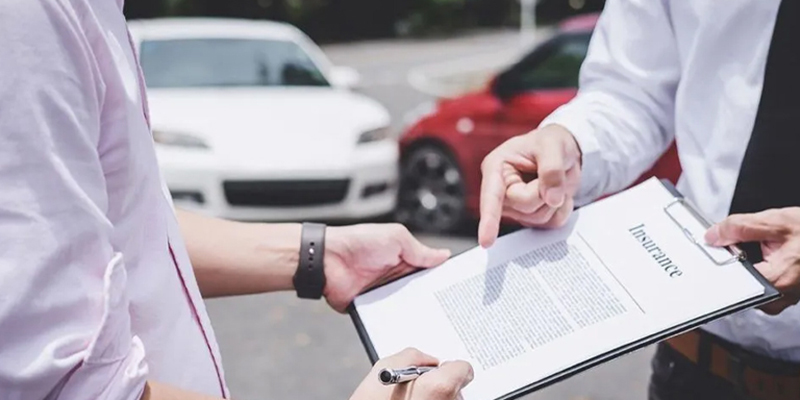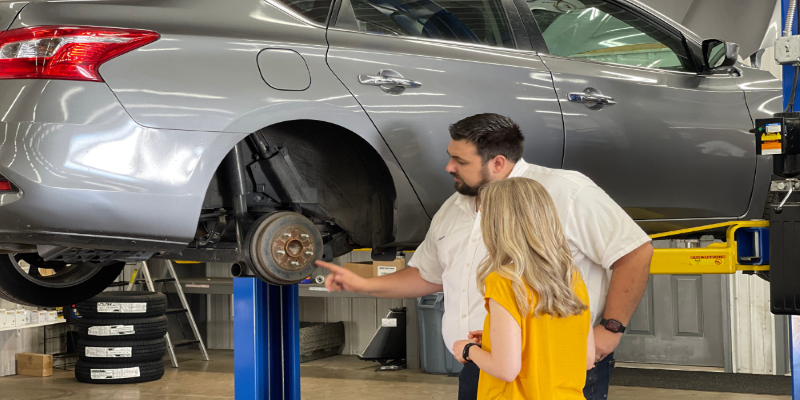How To File A Car Insurance Claim The Right Way: A Step-By-Step Guide
So, you've been in a car accident, or perhaps your vehicle was damaged in a parking lot. First things first—take a deep breath. No one ever plans for these moments, but knowing what to do next can make all the difference.
Here's the deal: filing a car insurance claim isn't complicated—but it does require you to follow the proper steps. Doing things correctly can save you a significant amount of time, Stress, and potentially even money. In this guide, we break it all down into manageable parts, with tips that make sense and examples that help you get it right the first time.

Let’s start with the basics and work our way through the whole process, from the moment something happens to the final settlement.
What Should You Do Right After an Accident?
Before you even think about calling your insurance company, prioritise safety first. If you're involved in an accident—whether it's a major collision or a minor fender bender—check if anyone is hurt. If so, call emergency services immediately.
Next, move your vehicle to a safe spot if it's drivable. Turn on your hazard lights. If you're on a busy road, set up reflective triangles or flares (if available) to alert other drivers.
Pro Tip: Never admit fault on the scene. Stick to the facts when talking to the other driver, the police, or your insurance company later.
Collect Important Information at the Scene
The more information you gather right after the incident, the smoother your claim process will go. Don’t rely on memory—use your smartphone to take notes and photos.
Here’s what to collect:
• Names and contact info of everyone involved
• License plate numbers
• Insurance details of other drivers
• The vehicle makes, models, and colours
• Time, date, and exact location of the accident
• Photos of the damage to all vehicles, the surrounding area, and any road signs or signals
Optional but helpful: If there are witnesses, also ask for their contact information. Their statements could support your version of events if there's a dispute later on.
When and How to Contact Your Insurance Company
Once things have calmed down, it’s time to notify your insurance provider. It’s best to do this as soon as possible—ideally within 24 hours. Most insurers allow you to file a claim through their website, mobile app, or customer service line.
Here’s what they’ll typically ask you for:
• Your policy number
• A detailed account of what happened
• Information about the other party (if another vehicle was involved)
• Photos and documentation you collected at the scene
You'll be assigned a claims adjuster, whose job is to investigate the case, assess the damage, and guide you through the following steps.
What Is a Claims Adjuster, and What Do They Do?
A claims adjuster is your main point of contact during the claims process. They'll review the evidence, estimate the repair costs, and determine how much the insurance company should pay.
They may ask to:
• Inspect your car in person or request you bring it to an approved shop
• Interview you or other parties involved
• Review police reports, medical records (if applicable), and witness statements
Tip: Always be honest with your adjuster—but keep your explanations concise and straightforward.
Repair Options: Do You Get to Choose the Shop?

Yes—and no. Most insurance companies have a network of approved repair shops they prefer to work with. If you go to one of these, the process is usually quicker and more straightforward.
But you can choose your repair shop if you have a preferred mechanic. Please note that your insurer may require additional inspections or may not guarantee the repairs in the same manner as they would with a shop in their network.
Understanding Deductibles and Coverage Limits
Let's clarify this: your deductible is the amount you agree to pay out of pocket before your insurance coverage kicks in. For example, if the repair bill is $3,000 and your deductible is $500, the insurer pays $2,500.
Also, keep in mind your coverage limits. These are the maximum amounts your policy will pay out. If the damage exceeds your coverage, you may be responsible for the difference.
This is a good time to review your policy and ensure your coverage still meets your needs.
Common Mistakes to Avoid
Let's face it: insurance paperwork isn't fun. However, a few minor mistakes can delay your claim—or even cause it to be denied. Here are things to watch out for:
• Waiting too long to file the claim
• Leaving out details when describing the incident
• Failing to take photos at the scene
• Making repairs before the adjuster sees the car
• Not reading your policy and misunderstanding what’s covered
Avoiding these slip-ups can fast-track your claim and prevent unnecessary headaches.
What If Your Claim Gets Denied?
It happens. But a denial doesn’t mean you’re out of options. First, request a written explanation from your insurance company. They’re required to tell you why the claim was denied.
Some common reasons include:
• Policy lapse due to non-payment
• Damage not covered under your policy
• Filing false or incomplete information
• Missed deadlines
If you believe the denial was unfair, you can:
• Contact your adjuster and ask for a reevaluation
• Speak to a supervisor
• File a complaint with your state’s insurance department
• Get an independent appraisal or legal advice
How Long Does It All Take?
The timeline can vary depending on the complexity of the case. A straightforward claim with no injuries and clear liability might be settled in a week or two. More complex cases may take several months to resolve.
Most insurers are required by law to respond within specific timeframes—so if you feel things are dragging on, you’re allowed to follow up and ask for updates.
Filing a Claim Doesn’t Have to Be Stressful
Yes, the situation may be frustrating—but you don't have to let it get the best of you. By knowing what to do, gathering the correct info, and communicating clearly with your insurance company, you're already ahead of the game.
The more prepared you are now, the more confident and in control you’ll feel if you ever need to file a claim. Think of it as your roadmap to getting things back on track—with less hassle and more peace of mind.





